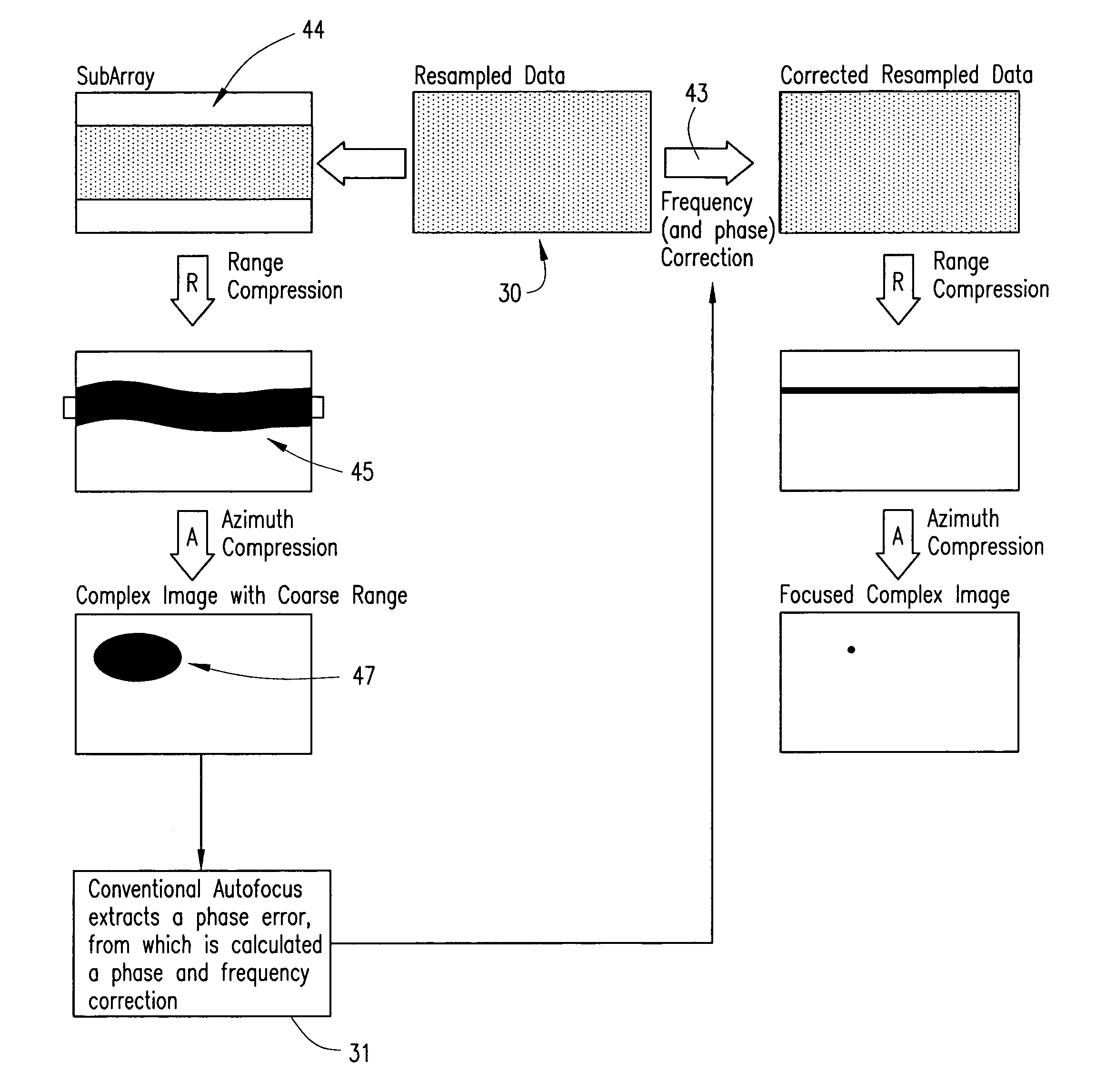Correction of motion measurement errors beyond the range resolution of a synthetic aperture radar
a technology of synthetic aperture and motion measurement error, applied in the field of synthetic aperture radar, can solve the problems of large relative motion measurement error, large motion measurement error, and rendering the image useless
- Summary
- Abstract
- Description
- Claims
- Application Information
AI Technical Summary
Problems solved by technology
Method used
Image
Examples
Embodiment Construction
[0027]The present invention recognizes that a phase error function in the azimuth direction cannot be ascertained from a fully range-compressed data set, since the error energy is spread across several range resolution widths. Therefore, some embodiments impose the constraint that, for extracting an autofocus correction vector, the range resolution must be coarse enough to encompass the phase error. Put another way, the phase error is measured on data that is not fully range-compressed, i.e. radar data with degraded range resolution. This can be done in some embodiments by using only part of each return echo, that is, a portion of the fast-time vector. It can also be done in some embodiments by blurring fully range-compressed data in the range dimension. In embodiments that use range subapertures for image formation, a single range subaperture can be employed for phase-error measurement. Once an accurate phase error has been measured, then the corresponding migration effects can be ...
PUM
 Login to View More
Login to View More Abstract
Description
Claims
Application Information
 Login to View More
Login to View More - R&D
- Intellectual Property
- Life Sciences
- Materials
- Tech Scout
- Unparalleled Data Quality
- Higher Quality Content
- 60% Fewer Hallucinations
Browse by: Latest US Patents, China's latest patents, Technical Efficacy Thesaurus, Application Domain, Technology Topic, Popular Technical Reports.
© 2025 PatSnap. All rights reserved.Legal|Privacy policy|Modern Slavery Act Transparency Statement|Sitemap|About US| Contact US: help@patsnap.com



